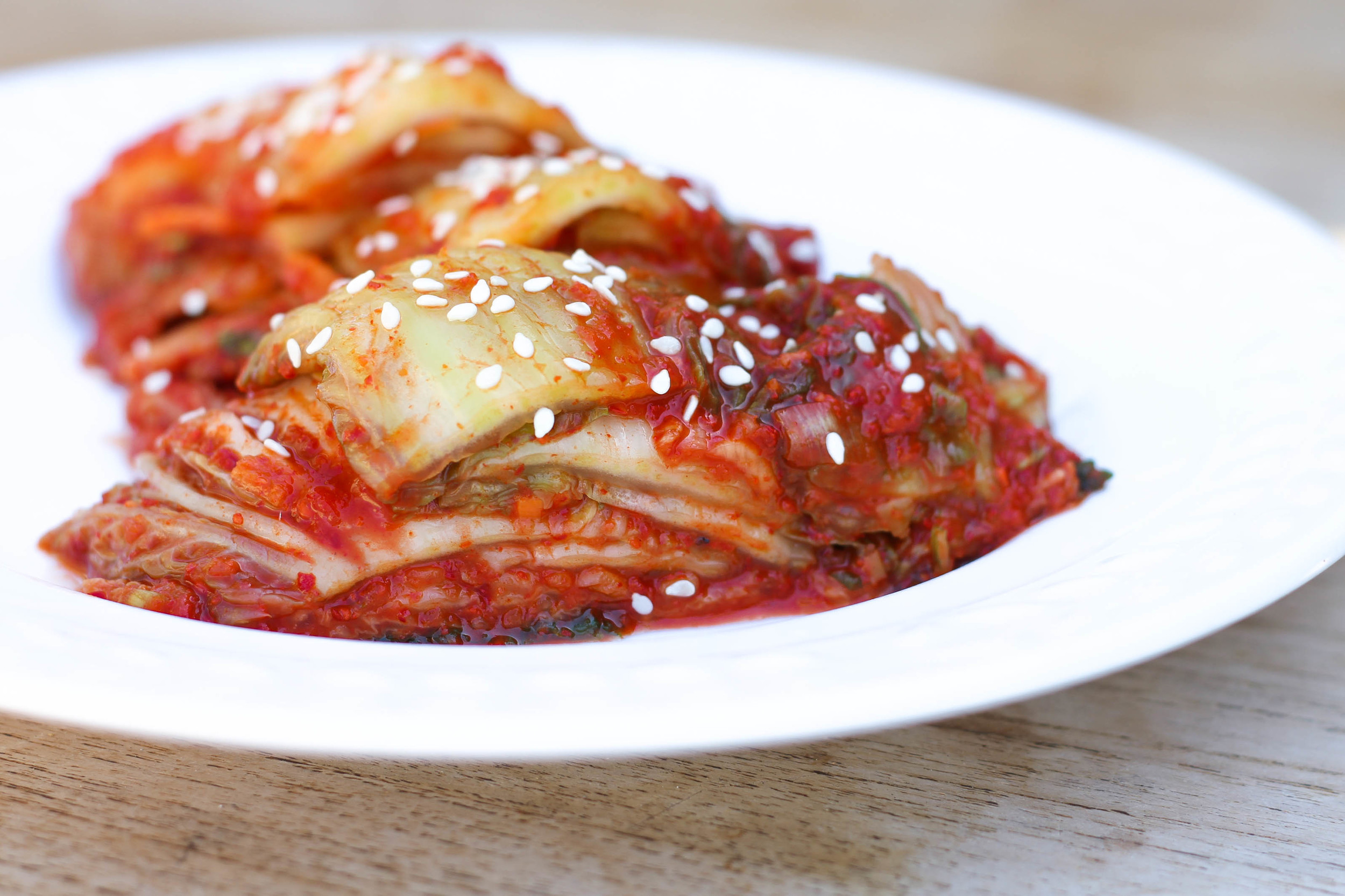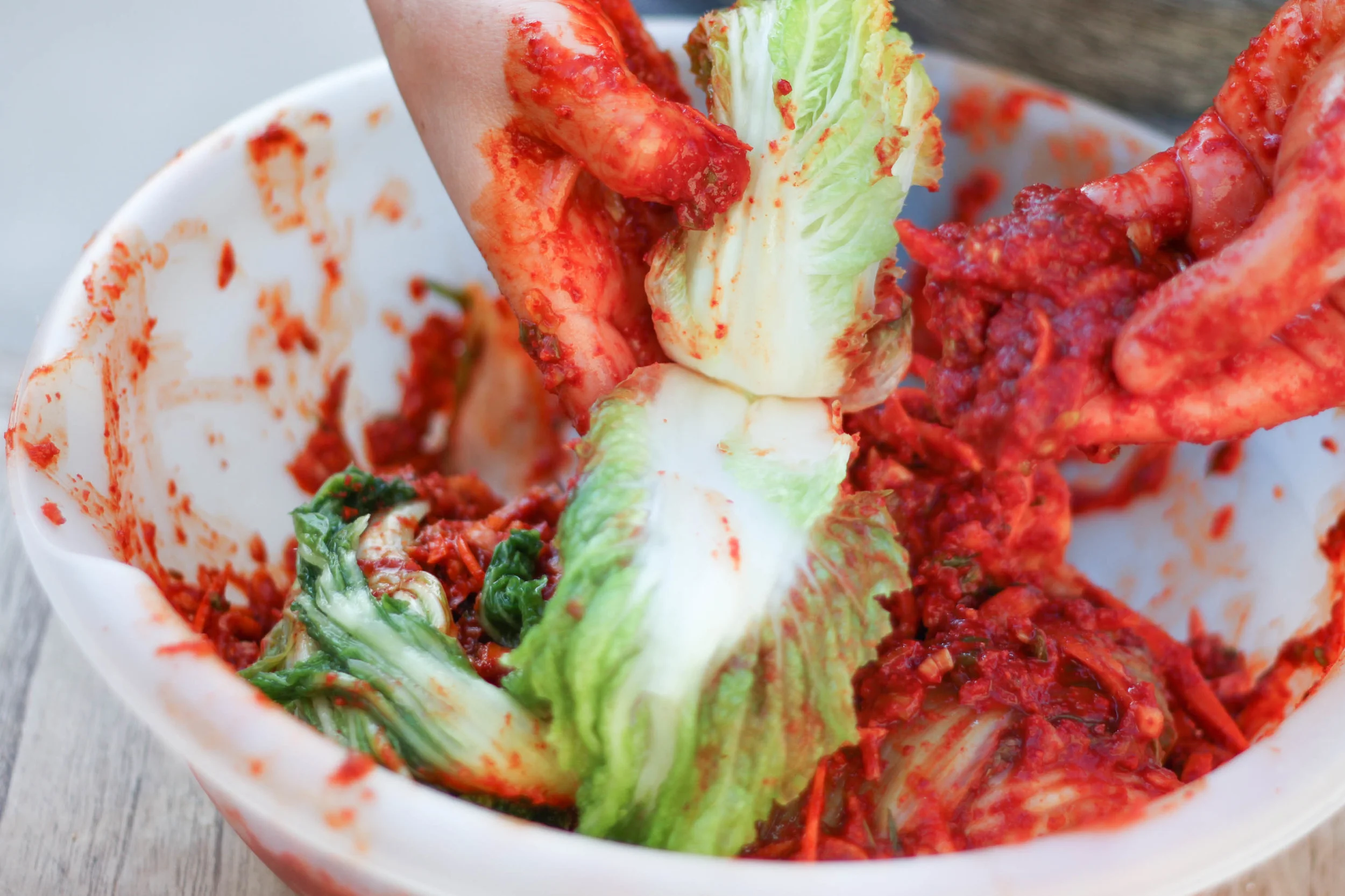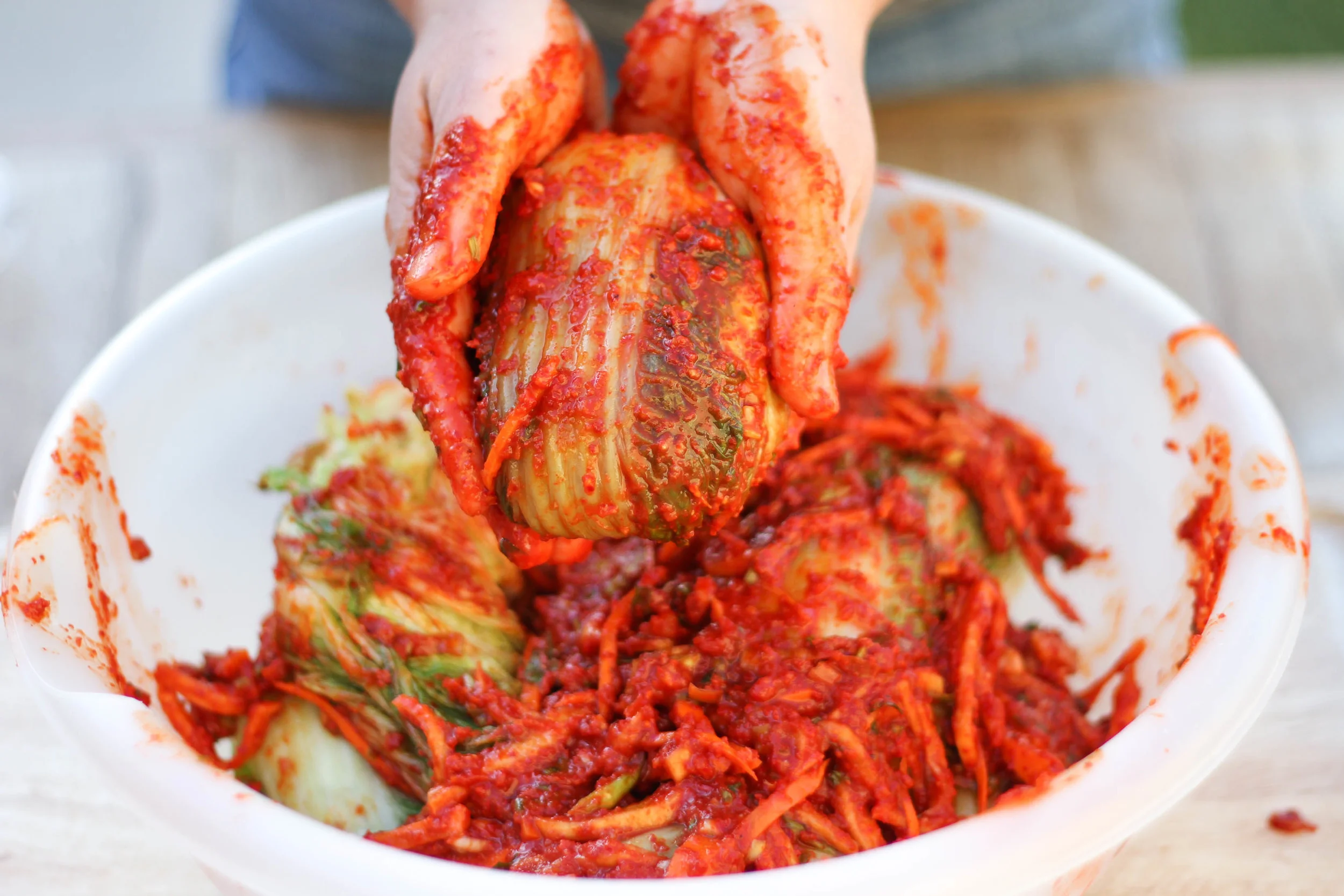Authentic Korean Napa Cabbage Kimchi Recipe
Short old Asian women are a force to be reckoned with, especially in Oakland Chinatown. I, many times, succumbed to their mercy. My mother taught me to always respect my elders but what do you do when little old Asian women keep cutting in line in front of you? These fragile little women nudge their way forward with a strong sense of entitlement. Most times, I get pushed back in line to wait it out. Other times, I give up, holding back tears in defeat. Usually, the husband has to get involved and just do it for me.
Generally, old Asian women scare me. However, in the case of a farmer's market, I look forward to the pack of old Asian women. Wherever you see a group of elderly Asian women, there is a deal somewhere. At the Oakland Chinatown Farmers' market, I simply follow the Asian women. Wherever they go, I go. This ensures I get the best deals. And when there is pack of old Asian women who appeared to be duking it out, there's a steal. That's my cue to follow suit and that is how I end up with 15 lbs of Napa cabbage. What do I do with all that Napa cabbage? Kimchi!
Napa cabbage kimchi
Kimchi is a traditional fermented vegetable side dish from Korea. It originated out of the necessity of preserving vegetables for the long winters. Now it is a staple in everyday Korean and other Asian households. Kimchi can be made out of any vegetables with the most popular being napa cabbage.
Finished kimchi paste
I have attempted to make kimchi many times and failed many times. I gave up on making my own kimchi for awhile and settled on the store-bought version. Read my kimchi disaster story. It was recently that my obsession for making my own kimchi drove me to give it another try. This time I decided to use a rice flour base. The rice flour base, or porridge, isn't required in making kimchi, but I find that it is helpful in holding all the seasoning together and getting the fermentation process going at a more even pace. Once I included the rice flour base in the recipe, I was really satisfied with the result. I finally got the recipe down to just how I like it. After a few days of fermentation, the kimchi was ready to eat. It pairs perfectly with Korean Beef BBQ and old kimchi that has gotten too sour goes wonderfully in Kimchi Fried Rice.
Spread kimchi paste thoroughly onto napa cabbage. Don't be lazy. Make sure to get in-between the leaves.
Wrap the cabbage tightly before transferring to an airtight container
Korean Kimchi Recipe
Makes about 8 lbs kimchi
Ingredients
Salting Napa Cabbage
7 lbs napa cabbage (3 to 4 large heads)
1/2 cup salt
Rice Flour Base
2 cups water
2 tablespoons sweet rice flour (glutinous rice)
2 tablespoons brown sugar
Seasoning
3 heads garlic (peel)
1/2 inch piece ginger (slice across the grain into small coins)
1 small white or yellow onion (roughly chop)
1/4 cup fermented salted shrimp
1/2 cup fish sauce
1-3/4 cups Korean hot pepper powder
Vegetables
1 small radish (peel then into matchsticks)
2 carrots (peel then cut into matchsticks)
10 green onions (cut into 1/2 inch segments)
4-6 water dropwort (optional; cut into 1/2 inch segments)
Nicely tucked together. How pretty.
Instructions
Prepare and salt the cabbage. Start by cutting off any protruding ends (do not cut off the core ends completely as they hold the leaves together). Split the cabbage into halves, then quarters. To prevent the leaves from shredding, split the core only, then tear the napa cabbage leaves apart. From here, you can either leave the cabbage in quarters or cut them into bite size pieces. I prefer to keep the cabbage in quarters because I like to cut into bite size pieces just before serving for a more elegant presentation.
Wet cabbage in a large basin of water. Generously sprinkle cabbage with salt, making sure to get salt in between each leaf. Don't worry about over-salting. The cabbage will be rinsed later.
Allow the cabbage to rest for 2 hours. Turn every 30 minutes.
In the meantime, prepare the rice flour base. Add water to a small sauce span and mix in the rice flour. Whisk until dissolved. Heat on medium high until it starts to bubble. Turn off heat then add sugar. Whisk until combined. Set aside.
After two hours of salting, rinse cabbage thoroughly with water a few times to remove all the salt. Place the salted cabbage in a colander to drain and dry. Set aside.
In a food processor, chop garlic, ginger, onion and salted shrimp into a fine paste. Transfer to a large mixing bowl.
To the mixing bowl, add fish sauce, hot pepper powder and rice flour base. Mix until combined.
To the mixing bowl, add vegetables and mix until combined. The paste will appear chunky and thick. Allow it to set for 30 minutes until the vegetables wilt down slightly.
Spread kimchi paste on each cabbage leaf. Wrap cabbage into a tight bundle then store in a airtight container.
You can eat right away or allow the cabbage to ferment for 4 to 6 days before eating. For quicker fermentation, store the kimchi at room temperature.
Sprinkle with sesame seeds for a finished look and enjoy with Korean Beef BBQ.
Into a container you go.
Ready for immediate consumption or fermentation.








Here is a super tasty and spicy stir-fry sauce made up of a Korean chili paste condiment known as gochujang. Gochujang is a Korean fermented red chili paste, mixed with soybeans, glutinous rice powder and salt. It has a spicy and sweet flavor that goes great with stir-fries, soups, marinades and stews.